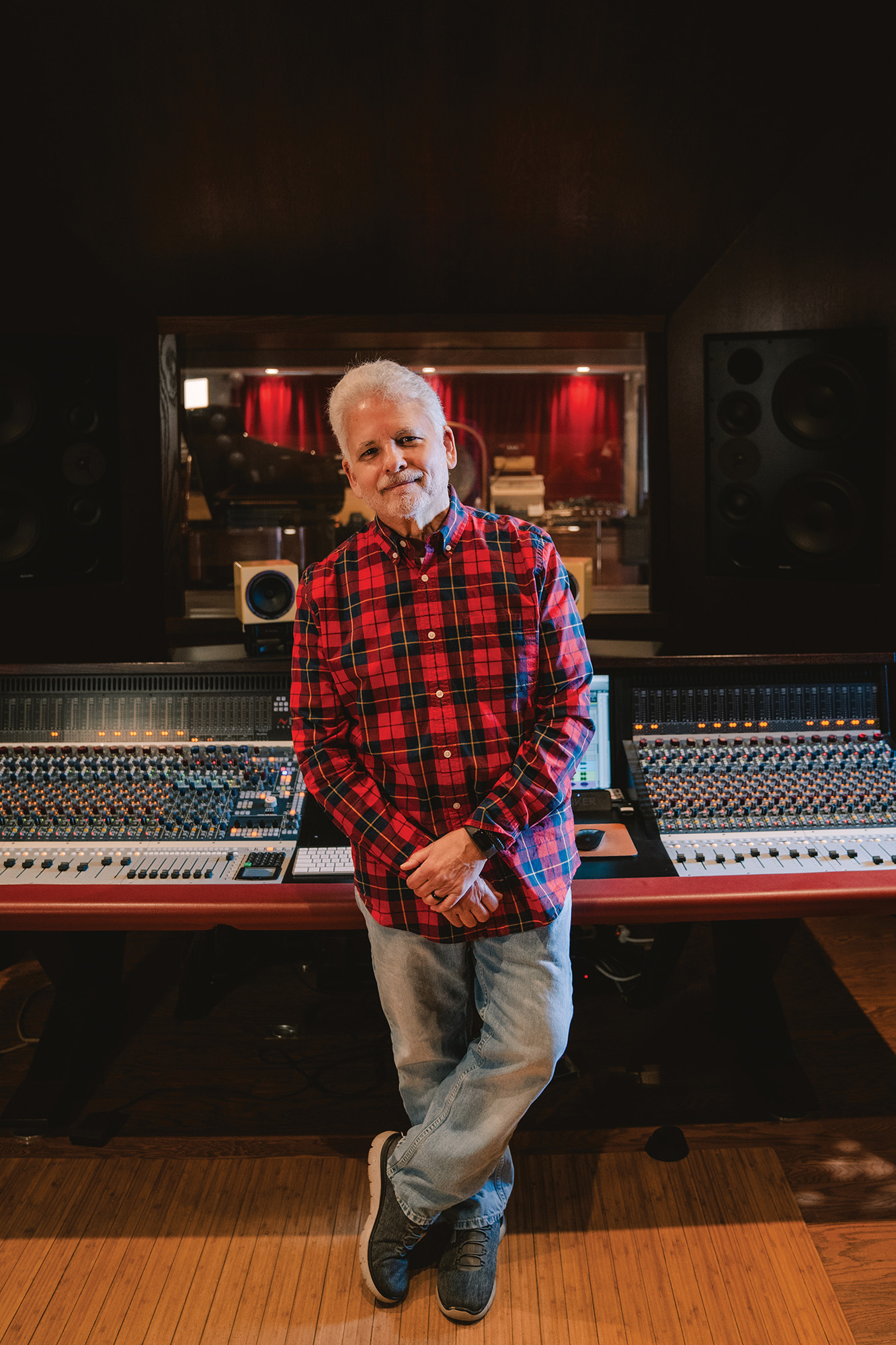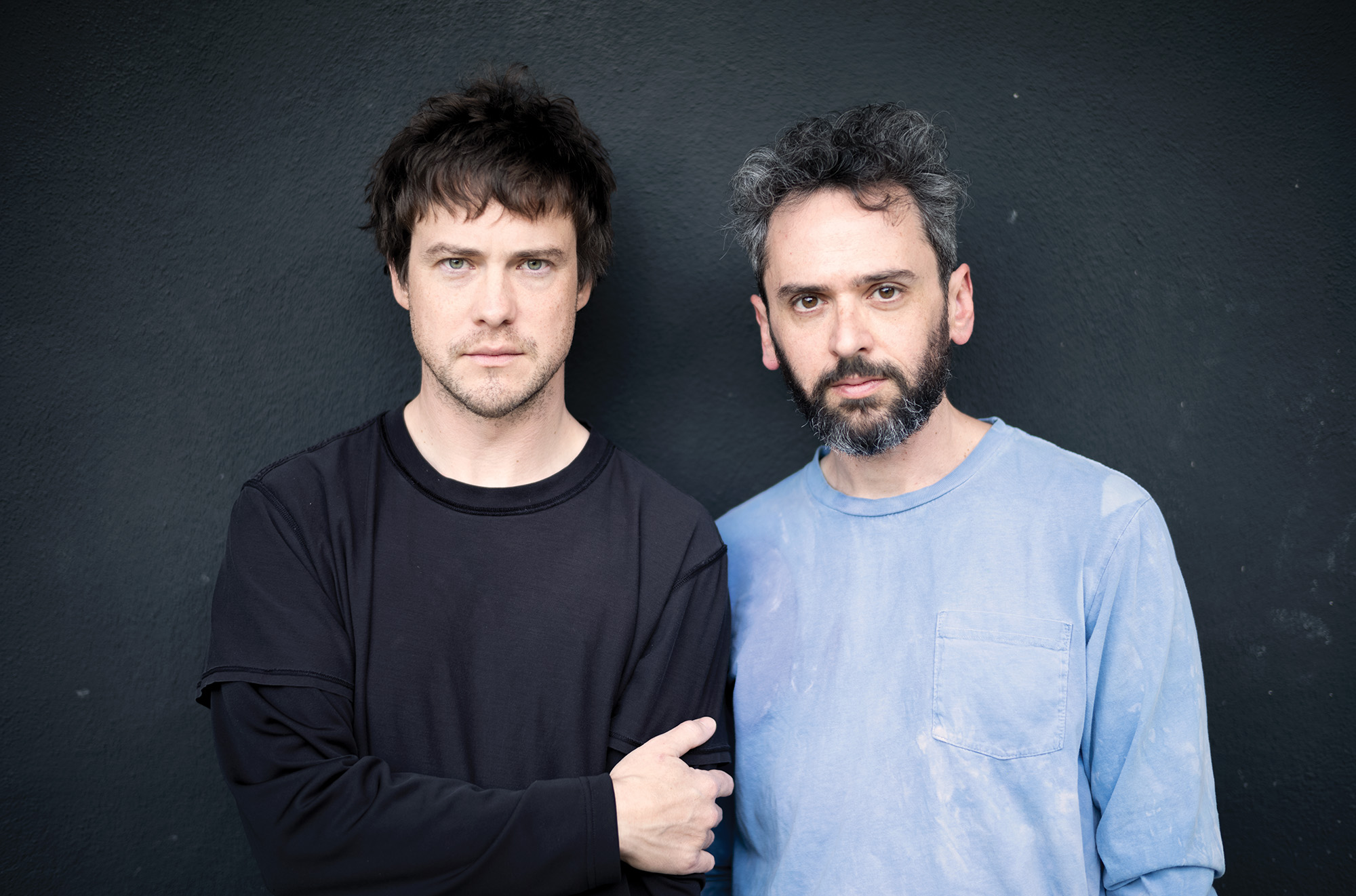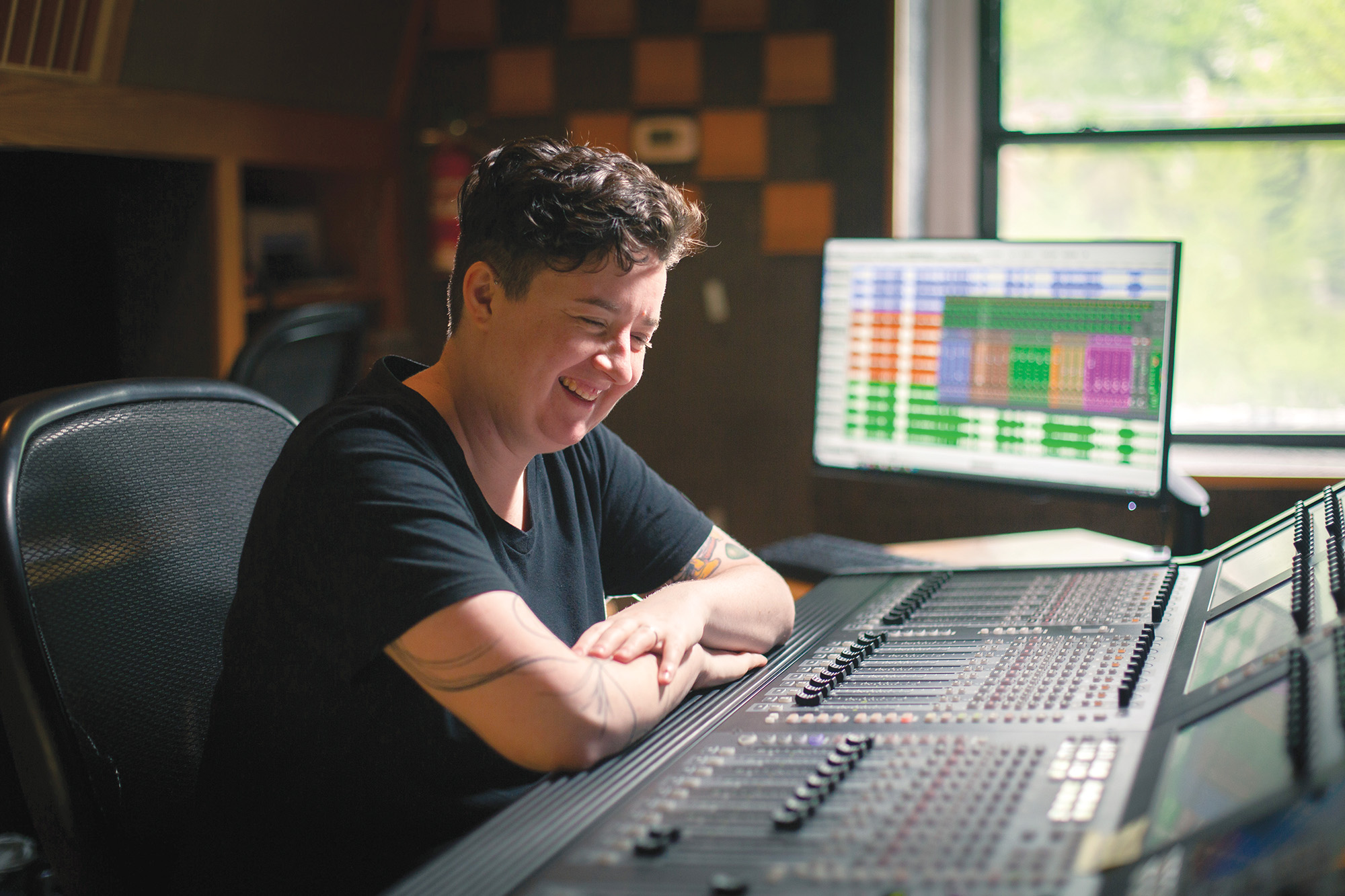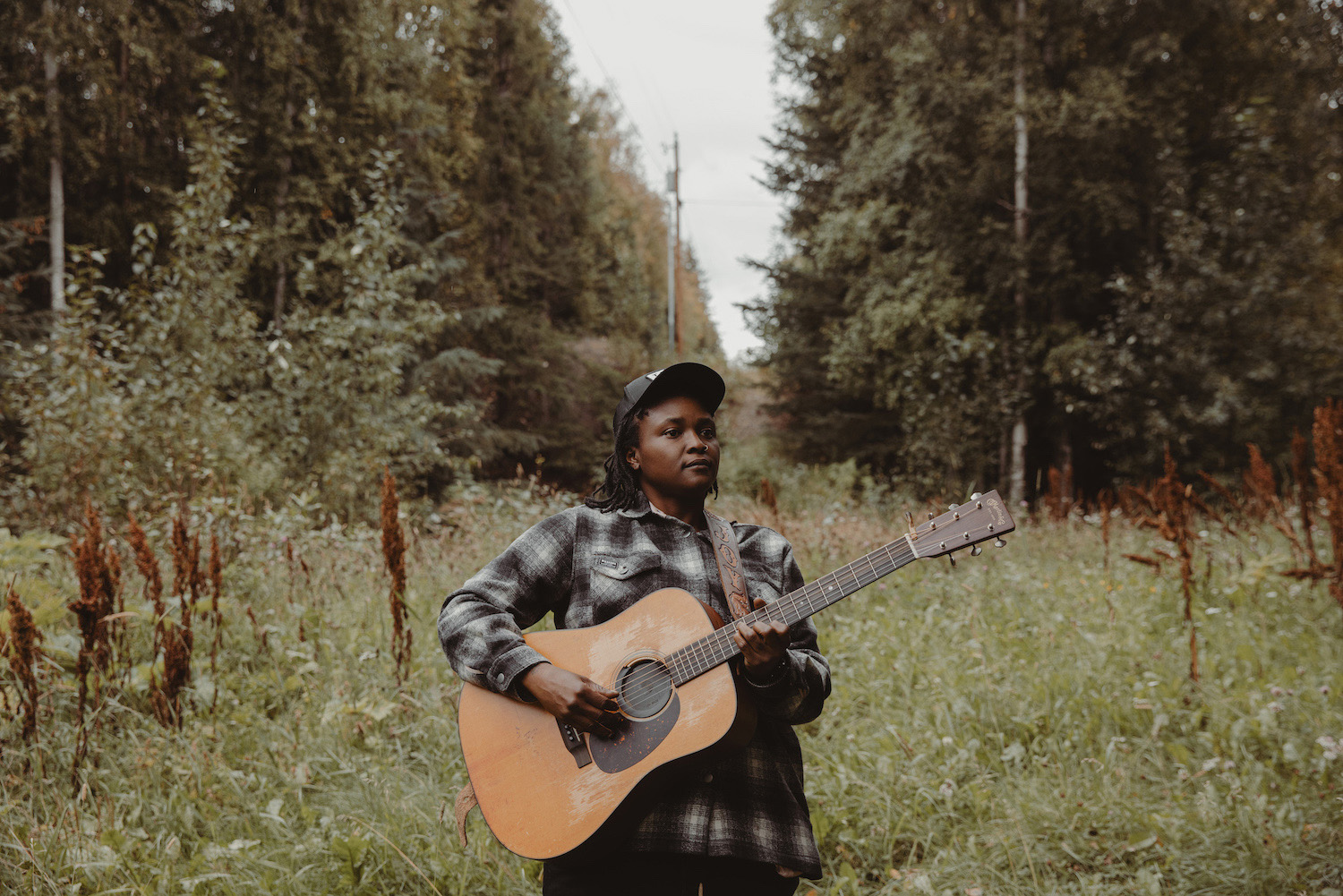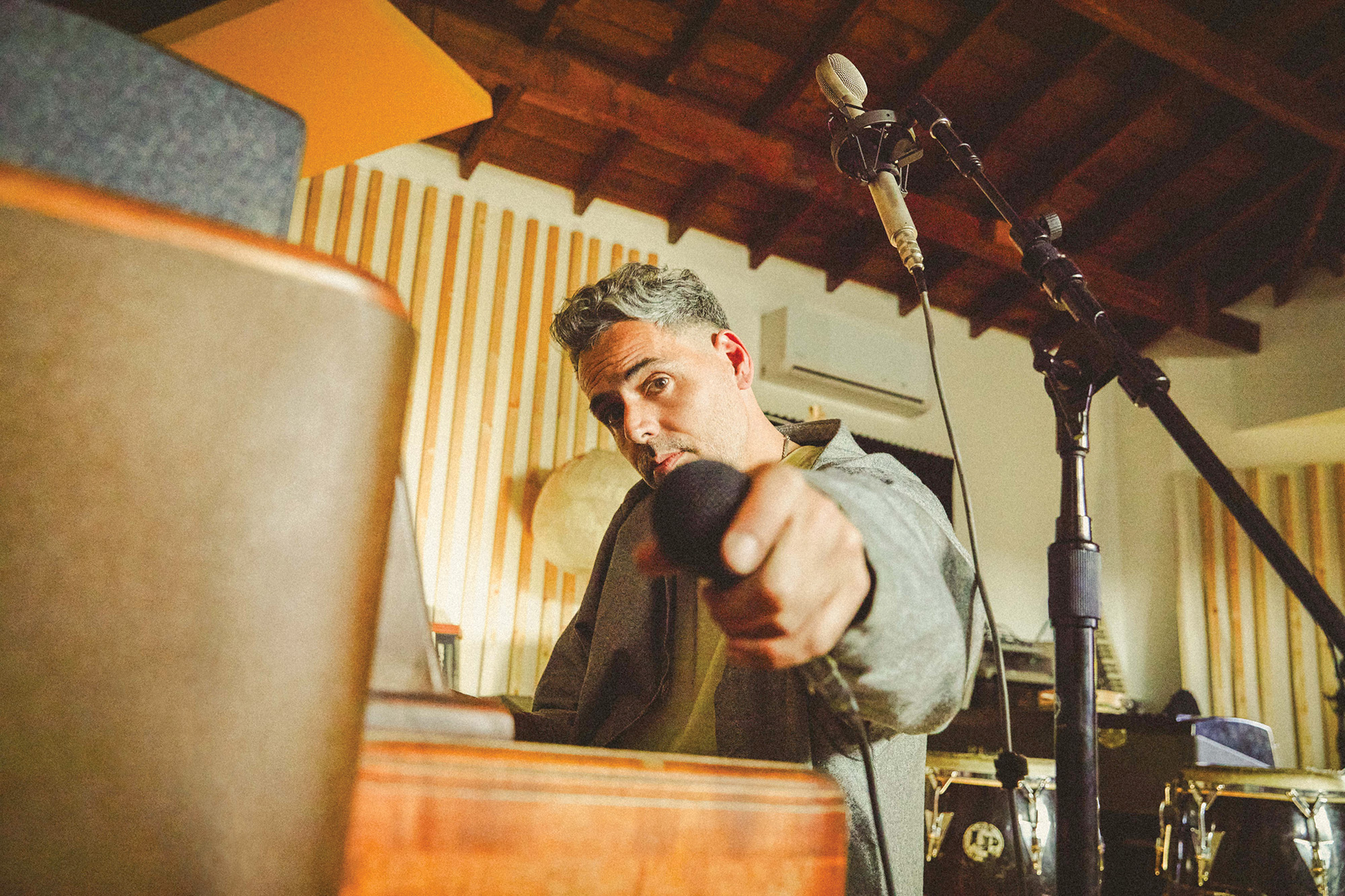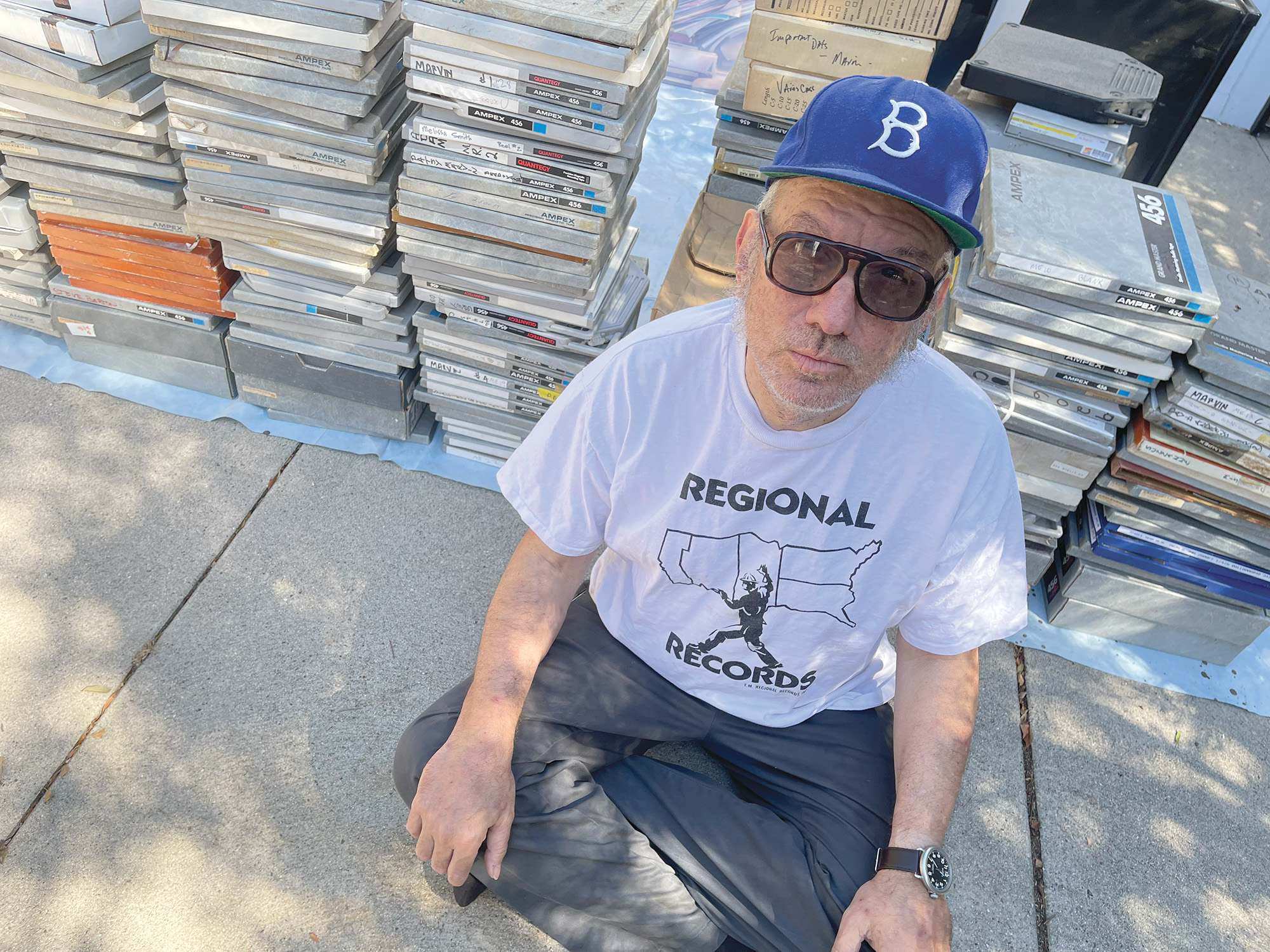I remember when Erik was doing the Stapes mics, and I wondered what your connection was with that era and how that evolved into the Avenson mics?
He built a battery version of the mics out of the Tape Op book [issue #16, book Vol. II]. I thought, "I can definitely do that better. We can use phantom power." We worked together to build that first mic, and he was selling them and I was building them. Eventually I decided to redesign the mics for a metal body and bring them out under my own brand...
You were using XLR connectors before.
We were using the little Neutrik XLR connector. There are some brass versions, and after that we went to a plastic Delrin — an all black, tiny mic. I think we made almost 300 of those before I started the metal body ones.
Did you guys part ways?
He was doing a lot more recording, and I was trying to get more people selling them. I decided if I brought it out under my own brand, he could still sell them and I could pick up other dealers.
What was your background in electronics?
I started out as a computer programmer in high school, and then as soon as my first program went obsolete, I decided, "I am completely out of software! I want something tangible when I'm done." I still have the first ugly guitar pedal I built. It's sitting in the shop.
The operating system's not going to change on you.
With that I started getting more into hardware, and I got a job working at a government research lab. I was doing high-powered switch research for railguns.
Crazy.
It was really interesting. They were working on some electric tank project and some flywheel battery concepts — really, really big electronics and inductors the size of a room. It was really neat working on electronics with a wrench instead of with a soldering iron. I did a lot of prototype building there, which really honed my construction skills. Then the funding died on that and I got laid off, so I got a job across the street in the same research area at Applied Research Labs. They did sonar research — more construction and practical implementation.
You were learning about parts and electronics?
How to build things. "Okay, we've got circuits here. How are we going to put them in boxes?" I was still working at Applied Research Labs when I did the very first mics, and eventually I left UT [University of Texas at Austin] and started working at a recording studio.
As an engineer?
Yeah, and as a maintenance guy. If you know which end of the soldering iron to use, you are now the maintenance guy at the studio. I was working there and getting started with Avenson Audio. At the same time I started playing in a blues band. I was on the road with Malford Milligan for a couple of years playing trumpet. I always said I got paid to drive the bus and played trumpet for free.
That sounds fun though.
It was. Eventually I got tired of being on the road, and the band wasn't able to support the seven-piece action anymore. That tapered off and I started doing Avenson Audio more full-time.
Is it a full-time job for you now?
Yeah. I discovered that there were audio companies that needed engineering help. I've been working with a number of other companies. It works differently per client. With some clients I will come to them with different ideas I have for their product line that might work. But a lot of times they have an idea of what they want. We'll work together and figure out how to turn these ideas into reality. I am working with Jon Ulrigg over at ShinyBox Audio. I've worked with Pete Montessi at Pete's Place Audio on the new BAC-500 [Brad Avenson Compressor]. I also work with Mike Castoro over at Wunder Audio. I designed the big recording console they did. It's quite a board.
Do you get a royalty? I have talked to some people who said they get a percentage of each unit sold or a flat fee per unit sold.
It depends on the clients. They're different deals.
Is it nice to do some of these jobs and get to work on designing something that you think is good, but also not have to do the follow-up of production and distribution?
A lot of times that's definitely nice. It's cool to design stuff that doesn't fit into my product portfolio. Avenson Audio has a niche.
What do you see that niche as being?
It's a lot of utility items. I don't try to jump into markets where there are a lot of other products that do [the same thing]. I don't do a preamp. Why? Because there are lots of preamps. You're bound to find one that you like that works well with my mics. Avenson Audio is just me. It's not like I have a good marketing department going or anything.
Do you have distributors?
In the U.S. I work with Mercenary, Front End Audio, ZenPro, Vintage King and Sound Pure. I have quite a few dealers overseas. It's growing.
I have seen your company grow from the very beginning. It's good to see that you can build up slowly and carefully and make a business.
I guess it's been 10 years now. We started building mics somewhere around 2000.
As far as new products are concerned, I think I saw a Mid-Side and a Blend box?
Those are the latest things that are hopefully going to start shipping soon. They are half-rack processors designed to be utility pieces. It's the analog glue you need to make your 2-track projects work. When you bounce a mix out of the box and you want to process it in the analog domain, if you wanted to do mid-side, but you only wanted to do mid-side, you could do it in the box really easily. But if you want to chain some gear together — like to put a little EQ on and do some mid-side compression — now you need some analog glue outside the box.
Could you use that with a mic pre setup?
Yeah. On the Mid-Side you have a width control so you can play with the stereo width. There's also a high- pass filter on the "side" so that you can roll out the out-of-phase bass material. It tightens up the low end — like the old vinyl elliptical filter trick.
Then the Blend box is for mixing two line level signals together?
It's a two-channel crossfade mixer.
You've got a horizontal fader on it instead of a pan pot.
I went for the fader because it looked really sharp, and I had that much panel space left.
Is it transformer-balanced?
No. I go for a lot of clean sound, especially with this. You don't want this to do the color. You're blending two things together. You're probably taking some signal and parallel compression or doing a quick, two- channel mix. You probably want the mixer to be out of the way because you're already doing the color.
There are people who say transformers are better. C'mon Brad.
Well, you know . . . I'm actually using the THAT input chips because of the scheme that Bill Whitlock (Jensen Transformers) came up with. [The 1200-series InGenius high-CMRR balanced line receiver IC.] He licensed his design to THAT Corp., who makes an IC version. It's a way to bootstrap the input to act like a transformer. It's probably the closest non-transformer input that you're going to get.
I didn't even know that IC existed. Is that what's inside of your Small DI?
The DI is all discrete. It uses an FET-input and a unity gain stage that drives the output.
How does it all fit in there?
It's a modern marvel of manufacturing. It's a little, tiny circuit board in there.
None of your products seem large. Is there some kind of theme here?
If you've ever been on the road, everything you carry with you better be small or light.
That's why you're a trumpet player and not a drummer.
I want something I can stick in my pocket! The Small DI can be used live as well as in the studio.
The larger IsoDI has more features.
It's the same signal path for the main signal as the Small DI. The power is isolated using a transformer, so there's a little DC-to-DC converter in there.
The phantom power is isolated?
Right. You get a true phantom lift while still running it on phantom. With some DIs, you'll hit the ground lift and now you're running on the internal battery. You don't get a good ground lift that way.
...or what's left of the battery.
Right. Hopefully it's still running. There's another transformer in the box, and it's an optional isolation for the output that goes to the amp. The idea there is that a lot of times the stage ground is so polluted with light dimmer hash and whatever — as soon as you parallel that input into the DI, it goes straight to front-of-house. This way it allows you to isolate the amp on stage. It allows you to break loops in two other places so that the main signal path is still transformerless and really clean.
That's very practical.
It is. A bass player (that I used to play with on the road) and I designed it because there was this one club that had really terrible power.
What's the Headphone Amp?
It's a 4-watt-per-channel power amp for your headphones. It was completely designed as a reference for me to test mics with. You start listening to the mics, and then you decide that maybe the little mixer you're using is affecting what you're hearing. So you put in a nice preamp, and you still have to plug it into the little mixer to listen to the output of the preamp. Then you're thinking, "Maybe it's still affecting the sound." That's when I decided to make a nicer headphone amp. It's got balanced line inputs as well as unbalanced, so if you want to go really pure-path, you can go into the unbalanced and it goes directly to the top of the pot. The rest of the amp is discrete, all DC-coupled and uses servo amps to give you a really nice, clean low-frequency response.
What feedback do you get from users?
I'm always stoked when I get the email from someone who says, "Hey, I need another one of these. I can't imagine doing gigs without it." The occasional time that somebody sends something in for repair and is desperate that you send it back to them right away, because they don't want to record without it — that's all cool.
Any products on the horizon?
I have to get the Mid-Side and Blend out and shipping. That half-rack size is pretty cool. It's got a built-in power supply that I designed that's real small, so I'll probably work in that size a bit more.
You can design other things that fit into that form?
Yeah. Once you've thoroughly tested something, you're not going to abandon it. In fact, I use the same power supply that's in my stuff in a few of my other clients' products as well. We can all benefit. We've engineered it down to the right size that it fits in the boxes and leaves us plenty of space.
Is there a design philosophy, or things you notice about other people's recording equipment?
I think I probably have less religious-style dogma attached to design than a lot of people, because I do design for different companies as well. When I'm designing Wunder gear, it's not like I use the same philosophy that I do when I design something for my company. With my company I have a specific philosophy. It's not across-the- board "I'm right." I think that this is a good way to go for my stuff.
Would part of your philosophy be keeping things on a budget that you yourself would be able to afford?
It's about getting the right size and feel for the user at a good price.
Do you feel like you get pretty fair assessments made of your gear on those online forums?
For the most part.
Have you ever had to defend yourself?
Not too much. It's always, "What's the bother?" Often I find people complain about the products because they don't do things. It's only supposed to do one thing. If you want to do something else, don't buy this product. That's the point. r
avensonaudio.com
